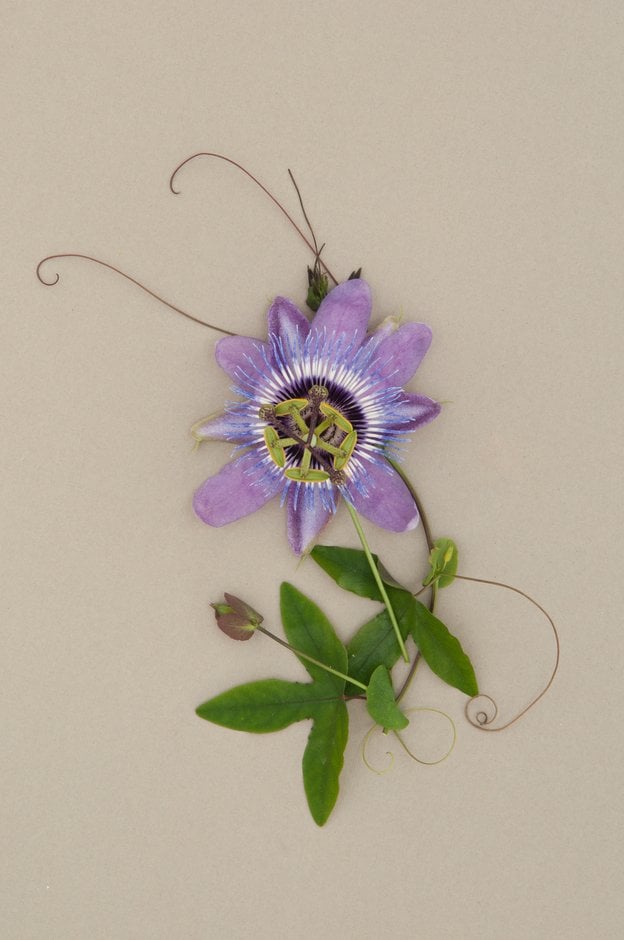Passiflora 'Betty Myles Young'
passion flower 'Betty Myles Young'
Vigorous, semi-evergreen climber with glossy, lobed leaves. Lightly scented, slightly reflexed flowers up to 10cm in diameter are borne in profusion from summer into early autumn; flowers have purple-blue petals and blue-tipped filaments and may be followed by egg-shaped orange-yellow fruits. The pulp in the fruits only can be eaten when they are fully ripe and yellow-orange. Unripe fruit and is toxic

Buy this plant
Size
Ultimate height
4–8 metresTime to ultimate height
5–10 yearsUltimate spread
2.5–4 metresGrowing conditions
Moisture
Moist but well–drainedpH
Acid, Alkaline, NeutralColour & scent
| Stem | Flower | Foliage | Fruit | |
| Spring | Green | |||
|---|---|---|---|---|
| Summer | Purple Blue | Green | ||
| Autumn | Purple Blue | Green | Orange Yellow | |
| Winter | Green |
Position
- Full sun
Aspect
South–facing or West–facing
Exposure
Sheltered Hardiness
H4Botanical details
- Family
- Passifloraceae
- Native to GB / Ireland
- No
- Foliage
- Semi evergreen
- Habit
- Climbing
- Potentially harmful
- Fruit are ornamental - not to be eaten. Wear gloves and other protective equipment when handling Pets: Fruit are ornamental - not to be eaten - see the HTA guide to potentially harmful plants for further information and useful contact numbers
- Genus
Passiflora are mostly tender tendril-climbing shrubs, with simple or palmately-lobed, generally evergreen leaves and showy flowers of distinctive structure with often colourful coronal filaments, followed by conspicuous fruits, edible in some species
- Name status
Accepted
How to grow
Cultivation
Fast-growing climber for a warm position in a sunny and sheltered position; thrives in moist but well-drained soil. In cold areas, grow in a container and overwinter indoors
Propagation
Propagate by, semi-hardwood cuttings or by layering in spring or autumn
Suggested planting locations and garden types
- City and courtyard gardens
- Cottage and informal garden
- Patio and container plants
- Wall side borders
Pruning
Pests
May be susceptible to glasshouse red spider mite, scale insects and glasshouse whitefly
Diseases
May be susceptible to honey fungus (rarely) and a virus
Get involved
The RHS is the UK’s gardening charity, helping people and plants to grow - nurturing a healthier, happier world, one person and one plant at a time.